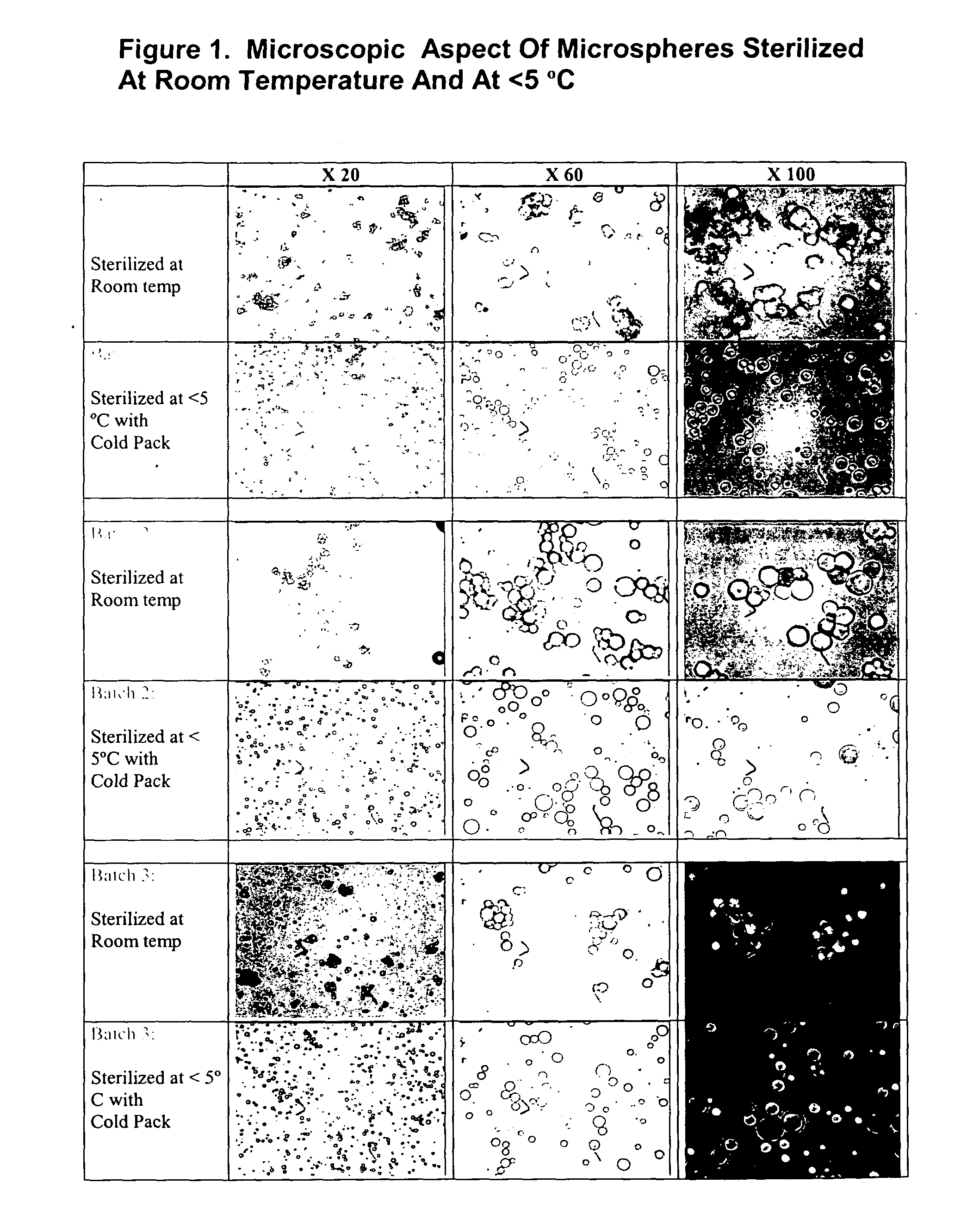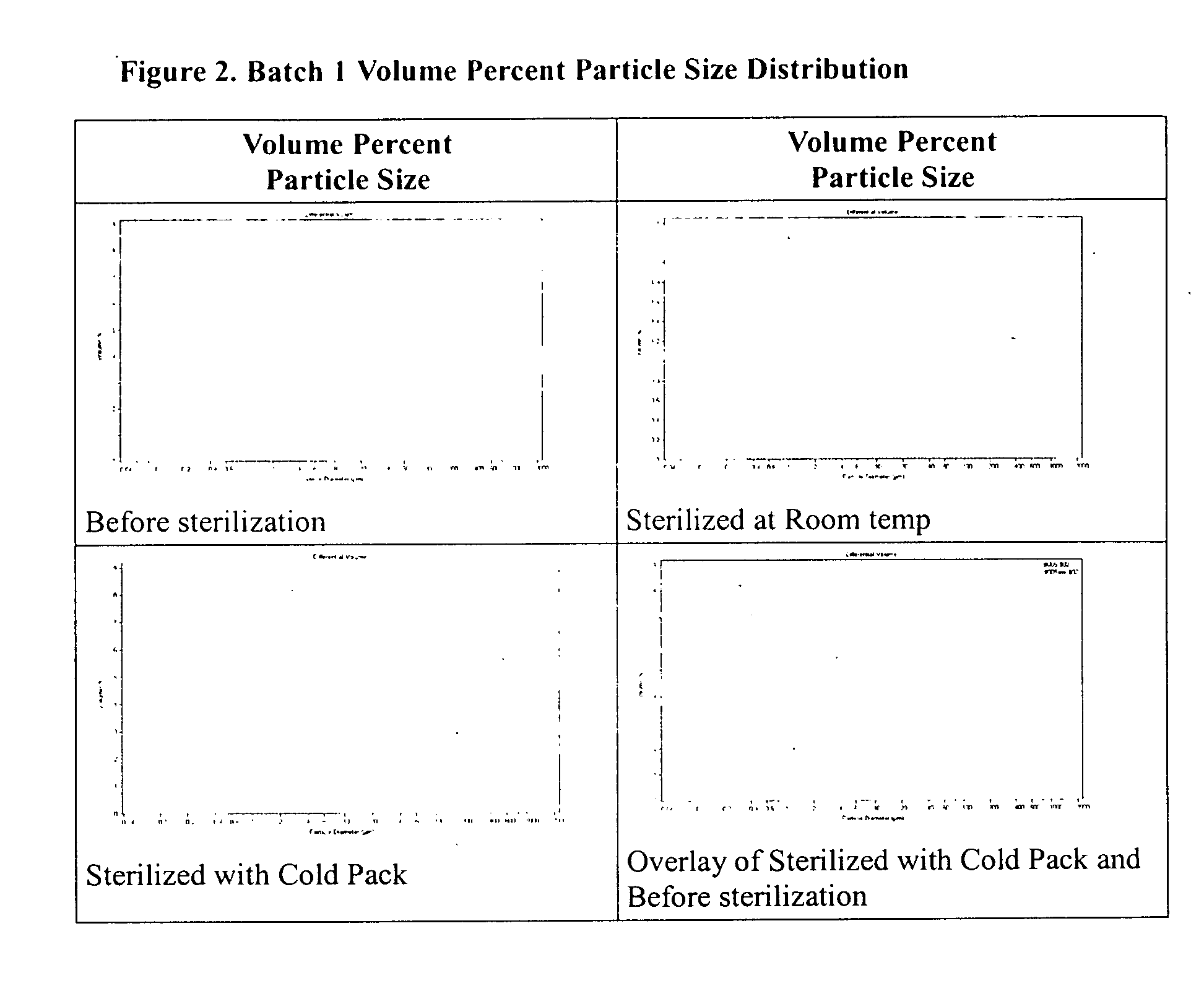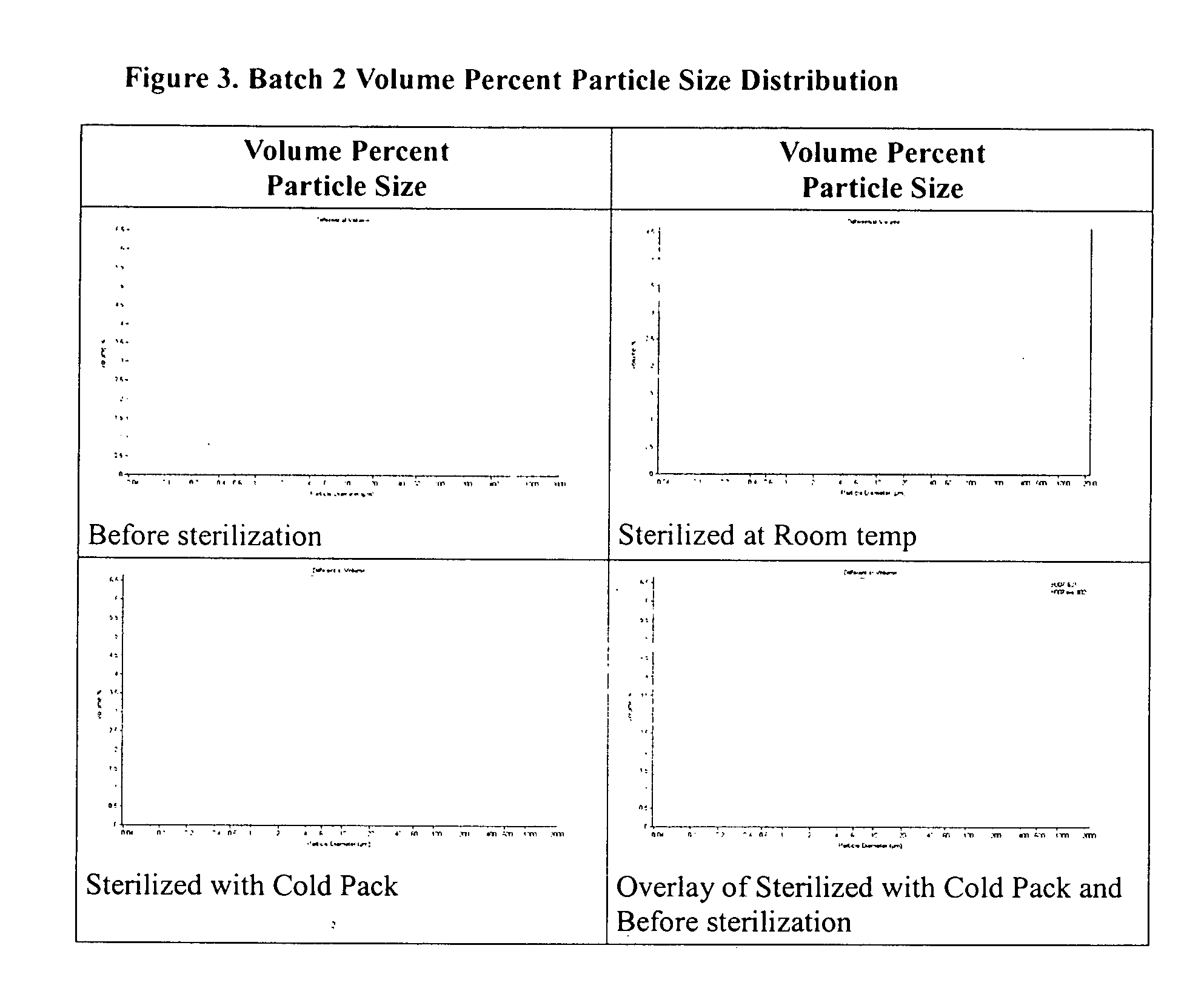Method of sterilization of polymeric microparticles
a polymer microparticle and polymer technology, applied in the field of polymeric materials, can solve the problems of significant variability in drug release, particle degradation profile, and reduced therapeutic usefulness of each method, and achieve the effect of improving the sterilization temperature of polymeric materials for use in the body of a mammal and reducing the temperature at which the irradiation is carried ou
- Summary
- Abstract
- Description
- Claims
- Application Information
AI Technical Summary
Benefits of technology
Problems solved by technology
Method used
Image
Examples
example 1
[0028] Microsphere Preparation
[0029] Unless otherwise indicated, all procedures in this and other examples were carried out at room temperature (25° C.).
[0030] Batch 1
[0031] Formula: Five-Gram Batch Size
ComponentUseQuantityPhase IPolyvinyl Alcohol (PVA)Stabilizer 47.5 gramsPurified WaterSolvent 1600 mLPhase IITazaroteneActive 0.5 grams (10%)Poly lactide-co-glycolidePolymer / Vehicle 4.50 grams75:25 intrinsic viscosity(i.v.) 0.43Methylene ChlorideSolvent 300 mL
[0032] In a five-liter beaker a solution of 3.0% PVA is manufactured using a high shear impeller and a stirring rate of 400 to 500 rpm at 80° C. Once the PVA is in solution, the stirring rate is reduced to 200 RPM to minimize foaming. PLGA is then dissolved in the methylene chloride. Once the PLGA is in solution, tazarotene is added and brought into solution.
[0033] Microspheres are then manufactured using a solvent evaporation technique. The PVA solution is vigorously stirred while slowly adding the tazarotene / PLGA solutio...
example 2
[0040] A dose of tazarotene (1 mg) contained in the poly(lactide-co-glycolide) microsphere suspension of Example containing 1 is injected subconjunctivally into a patient suffering from retinitis pigmentosa. Maintenance of vision or a slowing of the progression of vision loss is observed for the duration of treatment.
PUM
| Property | Measurement | Unit |
|---|---|---|
| Temperature | aaaaa | aaaaa |
| Temperature | aaaaa | aaaaa |
| Temperature | aaaaa | aaaaa |
Abstract
Description
Claims
Application Information
 Login to View More
Login to View More - R&D
- Intellectual Property
- Life Sciences
- Materials
- Tech Scout
- Unparalleled Data Quality
- Higher Quality Content
- 60% Fewer Hallucinations
Browse by: Latest US Patents, China's latest patents, Technical Efficacy Thesaurus, Application Domain, Technology Topic, Popular Technical Reports.
© 2025 PatSnap. All rights reserved.Legal|Privacy policy|Modern Slavery Act Transparency Statement|Sitemap|About US| Contact US: help@patsnap.com



